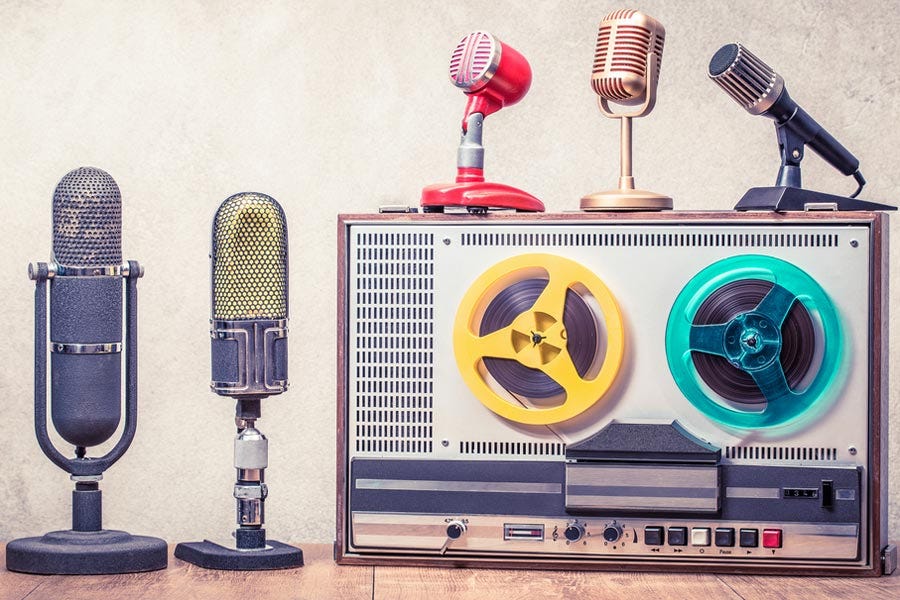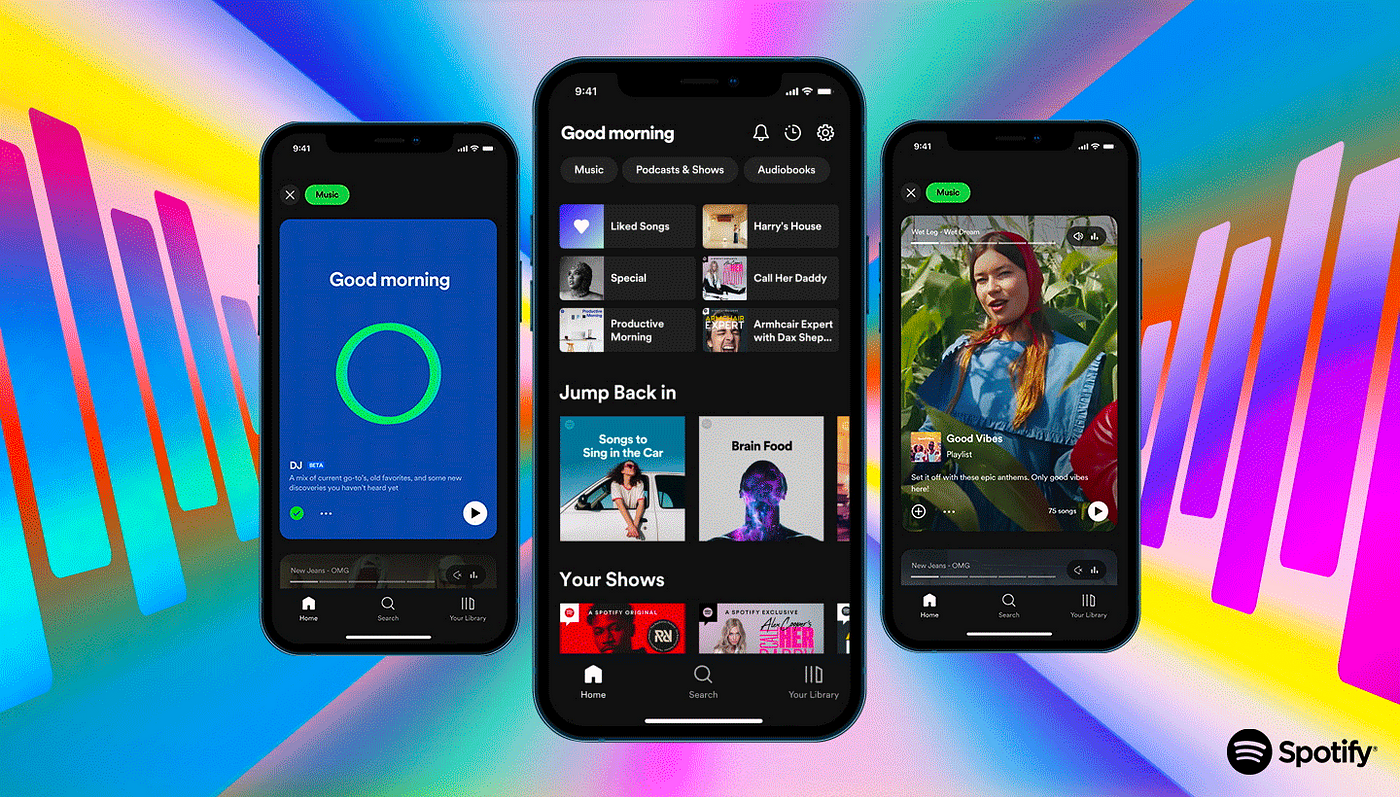The sound is truly extraordinary. Sometimes it feels like unexplained magic: the feeling of hearing our favorite song for the first time, the sense of companionship of a great podcast, the hypnotic buzz of white noise. But the truth is that the exceptional power of sounds can be explained by science.
Spotify has partnered with the research team at Neuro-Insight, a leading company in the field of cognitive studies, to understand why sounds have such a unique impact, especially digital audio. What we've seen from our research data and Neuro-Insight's Steady State Topography (SST) technology, which measures real-time brain activity, is that digital audio has exceptional power thanks to its interactivity and personalization. For advertisers, it’s a great opportunity to make the public listen to you.
How Sound Works: The Neurological Impact

Let's first understand how sounds work. After entering the ears and reaching the auditory cortex, different processing centers extract elements of sound, such as tone, rhythm, timbre and volume. These elements are combined again 30 milliseconds later. Recent advances in neuroscience show that sounds actually impact key areas of the brain, affecting the centers of memory, emotion and engagement.
To understand the cognitive processing of auditory signals, Neuro-Insight uses four proprietary metrics: Engagement (the degree of identification and relevance of the ad), emotional intensity (the strength of emotions generated by the ad), long-term memory for general characteristics ( memories, feelings and themes associated with the ad) and long-term memory for details (the specific message and details of the ad). Together, these metrics make up the complete picture of our ability to retain information and how we connect emotions to memories.
Digital Audio is Significantly More Impactful Than Radio

It's clear that sounds affect the brain. However, our research with Neuro-Insight found that the impact of some types of sounds is more powerful than others. Their technology showed that the experience delivered by digital audio was significantly greater across all metrics compared to radio. The result: higher levels of retention, engagement and emotional intensity.
Neuro-Insight believes that this improved performance is directly associated with the inherent qualities of digital audio, particularly personalization and interactivity. Unlike traditional radio, digital audio allows people to choose what they want to listen to. This way, it connects to their specific moments and interests. The research found that the interactive ability for users to select what they want to hear increases engagement and generates personalized experiences on digital audio platforms. As a result, people turn to music and podcasts at important moments in their lives, using digital audio to enrich those experiences. In the current media scenario, this is very important: 66% of participants said that audio is a good option to escape the large number of visual stimuli.
Listening on Spotify Engages Even More Due to Personalization

In Spotify research, we found that the power of digital audio is amplified even further on Spotify. When Neuro-Insight measured the psychosomatic activity of users listening to different types of audio, it became clear that Spotify provides the most immersive experience.
Spotify's countless features are designed for interactivity and personalization. Neuro-Insight attributes these qualities to the best performance in the engagement metrics found in the research. It turns out that these qualities don't just set Spotify a notch above other platforms. Neuro-Insight's research also found that the Spotify experience generated more engagement than TV, digital video and social media. It's a testament to the power of audio: Spotify's highly customizable platform seems to create a more engaging experience than watching a TV show on the couch or scrolling through social media feeds.
Where Everyone Listens to You: What This Means for Brands
In the current competitive media landscape, it is increasingly difficult to capture the public's attention with advertisements. But with the combination of personalized audio and interactivity that Spotify Advertising offers, advertisers can connect with people in moments when they are completely engaged in what they are listening to.

Spotify's effect on the brain, according to Neuro-Insight measurements, can result in a significant increase in ad retention and brand impact. Our research showed that 93% of the brain's engagement with content was converted directly into engagement with ads placed between music and podcasts. As a result, brand impact was 19% higher on Spotify compared to other media.
Methodology
Spotify and Neuro-Insight conducted the largest audio study of its kind, with more than 600 participants, which included analysis of music and podcasts. The research studied Spotify's impact and advantages over other media platforms such as terrestrial broadcasting, video, digital streaming and social media to provide the most comprehensive analysis of the brand, the platform and its role in increasing the prominence of advertisers.
The research uses Steady State Topography (SST), a proprietary technology from Neuro-Insight that measures the speed of neural processing from the scalp to create a second-by-second picture of activity in the brain. SST has been validated by research and applied in clinical and scientific studies for more than 15 years before becoming a neuromarketing tool. This technology is unique because it focuses on the brain's decision-making processes to help us better understand why we consume and buy content.
Frequently Asked Questions!
How does audio affect the brain?
From its capacity to summon profound close to home reactions to its part in memory and learning, sound impacts our mental prosperity and mental working. Investigating this relationship further can give important bits of knowledge into how we can outfit the force of sound to improve our lives.
Does what you hear affect you?
Similarly as with our different faculties, sound is handled in a piece of our minds that likewise processes our feelings. Specialists at McGill College in Montreal found that in guineas pigs who saw that an especially decent piece of music "made them shudder," a PET sweep estimated the arrival of dopamine.
Can frequencies affect brain?
Right half of the globe strength happens in 10 Hz beat in 25 minute or less. 6 Hz beat upgrades all region of the cerebrum in 10 minutes or less. 8 Hz and 25 Hz beats have no plainly reactions while 40 Hz beat improves the reactions in cerebrum.
What frequency affects emotions?
Recurrence range 432-440 Hz is unbiased according to human feeling point of view; Essential inclination coordinates, for example, Cheerful Miserable, and Irate Quiet are reflect symmetric in nature; Favored tones (i.e., audience's most enjoyed tone no connection to a specific inclination) lie in the recurrence scope of 210-540 Hz.
What does 10 Hz do to the brain?
Allegorically talking, 10 Hz is the regular inactive speed of the mind's "motor" very still, and lower speeds lead to "faltering" in sensorimotor capability (since sensorimotor boosts can't work with perceptual handling ideally at frequencies <10 Hz).
